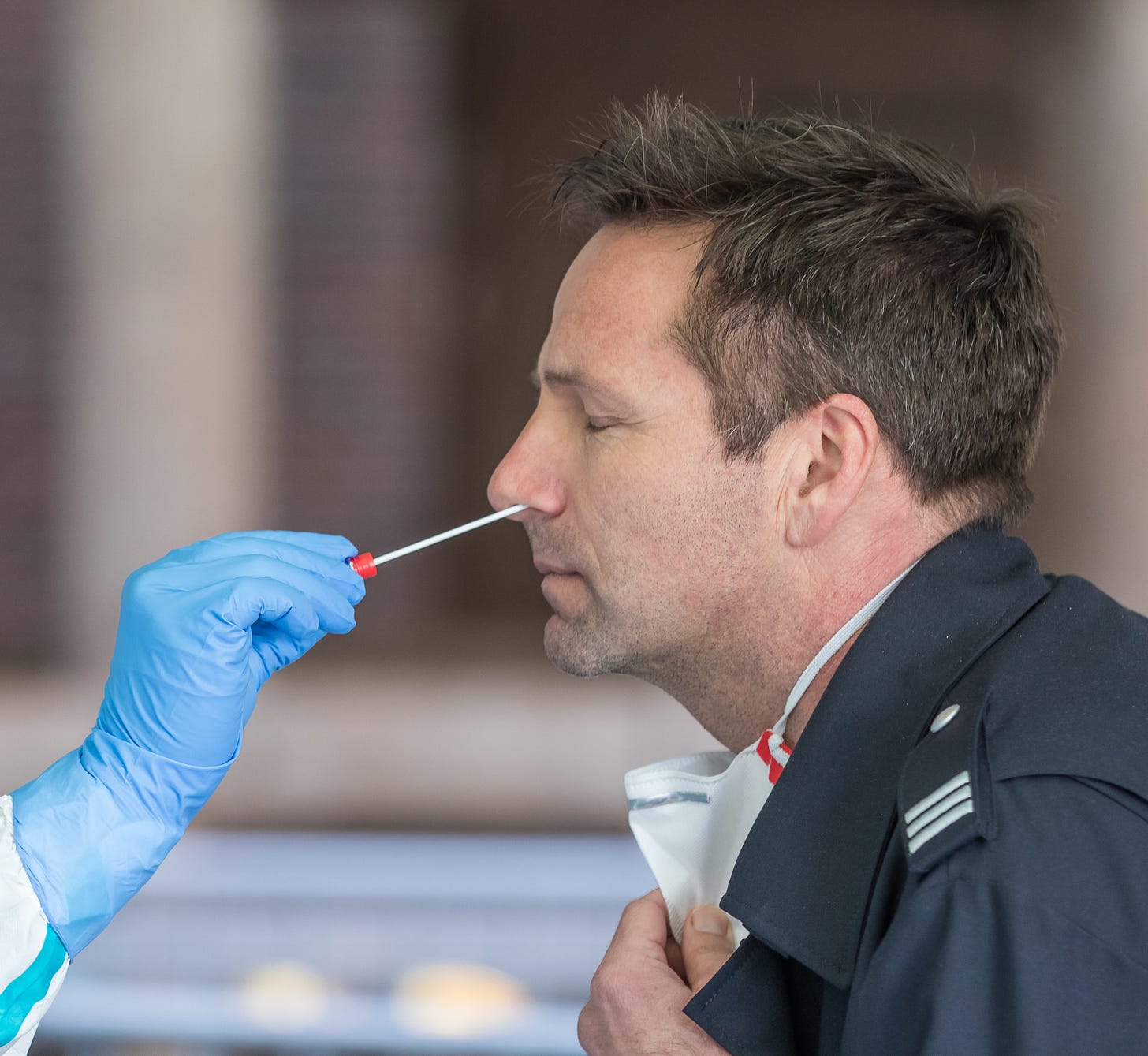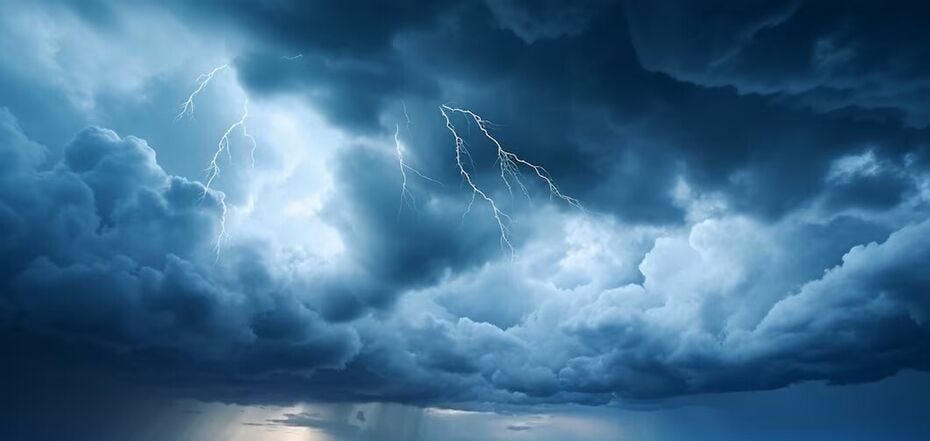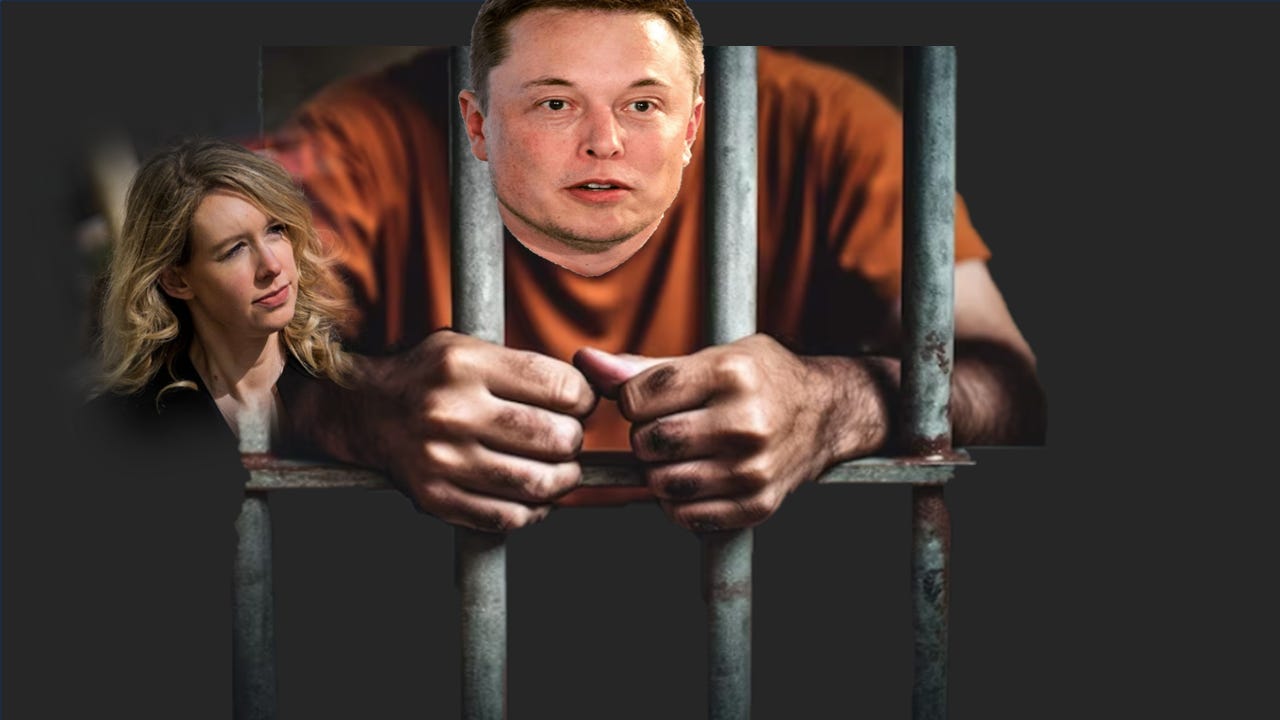The Long COVID Problem, Skyquakes, & Elon Musk
Wednesday Brief - October 16, 2024
Credit: Raimond Spekking, CC BY-SA 4.0 (via Wikimedia Commons)
Long COVID affects kids at about the same rate as adults
A study published in August in the Journal of the American Medical Association (JAMA) revealed that “Long COVID” effects a substantial portion of children. The Cleveland Clinic defines the condition as “a collection of symptoms that last three months or longer after your first COVID symptoms.” According to the JAMA study of 5,367 children, “20% of kids (ages 6-11) and 14% of teens met researchers' threshold for long COVID.”
Children across this range of ages experienced issues in nearly every organ and effects included gastrointestinal problems, extreme fatigue, cognitive deficits, or perceived changes in mental acuity. Specific symptoms also occurred separately in the two groups:
While younger children had a distinct cluster of symptoms that included attention problems, gastrointestinal issues, and sleep issues, teens were more likely to experience a loss of taste and smell as well as brain fog and extreme fatigue.
To receive a diagnosis of Long COVID, one must get infected in the first place. The odds of avoiding infection are drastically raised when vaccinated: above 84% for the most vulnerable groups (elderly or with certain chronic conditions) and above 95% for others.
Long CVOID occurs from reinfection as well, meaning you can develop it despite having recovered from a first or several previous COVID illnesses that caused no lasting effects. Each reinfection—even those accompanied by minor initial symptoms—increases the odds of developing Long COVID and also raises the probability of more severe long-term effects. As Dr. Rambod A. Rouhbakhsh explains, “you want to try to avoid reinfection if possible. That should not be the mechanism by which you aspire to get immunity from the virus.”
Key contributing factors to rising rates of Long COVID are a reduction of boosters administered among the populace and the relatively lighter symptoms of the current prevalent variants.
On the former, in 2023 only about 7% of the US population received boosters (global rates are unavailable). At least 40% of American adults reported that they would not seek out the latest booster. Because the variants exhibit immunity evasion to older vaccines, and natural immunity is only effective for a few months in the best of circumstances, large numbers of people are vulnerable to Long COVID.
When people do become sick with COVID, the more recent variants cause less severe symptoms upon the initial illness. As a result, few anticipate the possibility of suffering Long COVID effects, and many are unable to positively identify them as COVID-related when they occur. Partly for this reason, treatment remains insufficient. So far, the typical rate of Long COVID sufferers across the world is around 19%, averaged among all age groups.
The solution to preventing Long COVID infection is to stay updated on COVID vaccinations and avoid reinfection by wearing masks when in crowded environments. Of course, taking usual precautions like frequent handwashing is a highly effective preventative measure as well.
Are quakes in the sky real? Source: Freepik
Skyquakes
Across the globe, people have reported what many are now calling “skyquakes.” These are strange noises apparently coming from the atmosphere that sound like artillery fire. Indeed, in central New York State near Seneca Lake, locals refer to the booms as “Lake Guns.” This phenomenon is not new. Since as far back as the 1800s, according to the US Geological Survey, instances of such noises have been heard, often—though not always—in close temporal proximity to earthquakes.
A study in 1976 confirmed atmospheric sounds ranging from 50 to 70 Hz occurred following three very small (2.0 to 2.8 magnitude) earthquakes in Imperial Valley, California. The researchers concluded that “body-wave ground motion from local earthquakes is sufficient to generate audible acoustic pressure waves.”
In 1980, Donald Stierman, a Professor of Geophysics at the University of Toledo, wrote a letter in the Seismological Society of America about the phenomenon. He reported that following two earthquakes of 4.9 and 5.2 magnitude, his team recorded “numerous booming sounds, ranging from moderately loud… to faint.” Stierman added that even when the humans could not detect the sounds, both their equipment and nearby dogs did. His team did not definitively identify their source.
It seems that atmospheric booms might come from various origins of causation. In an analysis conducted in 2020 that included the “Seneca Guns,” scientists wrote:
Generally speaking, we believe this is an atmospheric phenomenon — we don't think it's coming from seismic activity, we're assuming it's propagating through the atmosphere rather than the ground.
They concluded that possible explanations include thunderstorms, oceanic wave-generated sounds, or exploding meteors. Still, they conceded that the matter remains undecided, stating “Ideally, a dense array located in an area where the signals are most often detected will allow for a more extensive analysis.”
Dmitry Budker, Victor V. Flambaum, and Ariel Zhitnitsky proposed a perhaps wilder theory. In a 2020 paper, they suggested that the sounds “could be a manifestation of the dark matter Axion Quark Nuggets (AQN) when they propagate in the Earth’s atmosphere.” They focused on an event measured by the Elginfield Infrasound Array (ELFO) near London, Ontario, Canada. Notably, their data precluded any possibility of an atmospheric explosion, such as that from an inbound meteor or a jet-induced sonic boom, or seismic activity.
They found that measurements of the sounds and of the atmosphere itself comported with the expected results of AQN annihilations. The AQN model predicts the overall baryonic charge of the universe. Baryons comprise particles such as protons and neutrons, whose disposition can create a baryonic charge (sort of like an electrical charge when there is an imbalance between positive and negative particles). The earth’s atmosphere’s tendency to carry a baryonic charge leads to baryon-antibaryon collisions and subsequent annihilations.
These collisions may be able to cause the sounds reported and the “basic estimates for the overpressure and the frequency [of baryonic collisions] are amazingly close to the signal recorded by ELFO.” Thus, this team proposes further study of skyquakes as the potential manifestation of this phenomenon.
Source: own work
Judge determines Elon Musk Does not know what he’s talking about
A judge recently dismissed a Tesla shareholders’ lawsuit against Elon Musk. In short, the plaintiffs in the case complained that Musk’s history of statements about Tesla’s Full Self-Driving (FSD) capabilities caused them to invest, and their investment has not seen a return because he repeatedly fraudulently misled them about those capabilities, knowing full well that they simply did not meaningfully exist.
The judge found, essentially, that Musk says FSD will still happen, so… it could still happen. She ignored the frequency of fraudulent statements and acts Musk undertook to bolster his claims that FSD exists and works now. FSD unquestionably does not function anywhere near the level Musk routinely claims. The judge partially supported her opinion by concluding that Musk simply does not know what he’s talking about when it comes to FSD capability. In other words, she asserted that investors should not rely on his statements about the technology. For a fuller analysis of this case, see here.
* * *
I am a Certified Forensic Computer Examiner, Certified Crime Analyst, Certified Fraud Examiner, and Certified Financial Crimes Investigator with a Juris Doctor and a master’s degree in history. I spent 10 years working in the New York State Division of Criminal Justice.
Visit the Evidence Files Facebook page; Like, Follow or Share! Or visit the Evidence Files Medium page for more on law, politics, and history. To support my work, consider Buying Me A Coffee.






